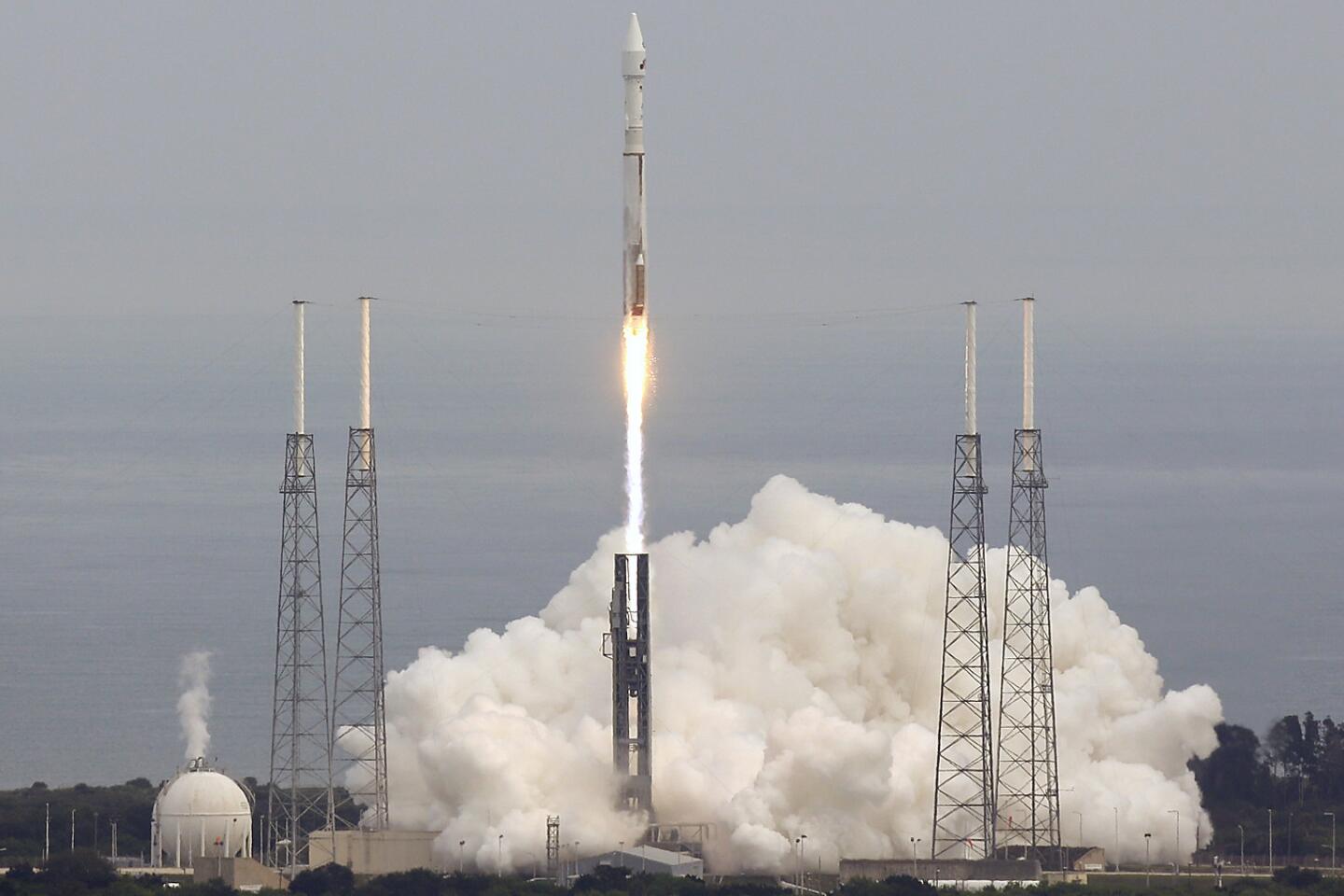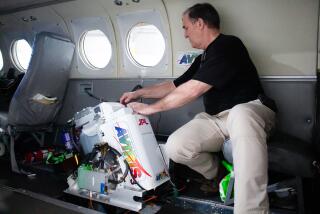NASA’s MAVEN mission blasts off to solve major Martian mystery
- Share via
A rocket carrying NASA’s MAVEN spacecraft blasted off from Cape Canaveral at 1:28 p.m. ET Monday, on a mission to answer a profound mystery about Mars’ planetary evolution: What happened to the atmosphere?
The agency’s latest robotic explorer will sample gas isotopes, catch solar particles and probe magnetic fields in the upper atmosphere, to try and figure out how long the Red Planet was capable of protecting liquid water -- and perhaps even supporting life.
Mars’ atmospheric pressure is less than 1% of Earth’s, making it so thin that it can’t keep liquid water from boiling away. (There is water ice stuck to the freezing poles of Mars.) But scientists think the atmosphere used to be much thicker and warmer.
“If we want to understand Mars as a system, we need to include the role of the upper atmosphere,” the mission’s principal investigator Bruce Jakosky, a planetary scientist at the University of Colorado Boulder, said in an interview before the launch. “We can no longer just look at the geology and understand it in isolation.”
The Mars Atmosphere and Volatile EvolutioN mission would use an array of instruments to test the sun’s effect on the thin remains of the upper atmosphere. That’s because, wherever the thicker atmosphere went, scientists think the sun’s punishing radiation probably had a lot to do with it.
That’s especially true further back in our past, because earlier in our solar system’s history, the young sun was a lot more active.
“There’s been a lot of exploration of Mars’ surface and geology from past missions,” said Randy Gladstone, a planetary scientist at the Southwest Research Institute who submitted a competing mission to NASA several years ago. NASA’s Curiosity rover is the most recent to touch down on the surface, looking for signs of life-friendly environments.
But this mission, he said, was the first to really investigate the upper atmosphere of Mars -- and it’s a key mission to understanding how life-friendly Mars could have been in the past, and for how long.
The mission has consumed much of Jakosky’s energy -- so much that he even gave his wife a special gift: coupons for MAVEN-free conversation time. (The coupons came with an asterisk: not valid for launch day.)
“She’s had to use a couple of them,” he said.
PHOTOS: Meet Maven and its instruments
At its closest point in orbit, the spacecraft will come as close as 93 miles above the ground (and at its highest point, it will be 3,728 miles above the surface). But over the course of its one-year primary mission, the spacecraft will also dip down to just 77 miles above the surface, sampling layers of gas as it goes.
Last month, MAVEN survived a government shutdown. If the spacecraft lives beyond its one-year primary mission, it will continue to sample the upper atmosphere and may also serve as a backup relay to send the Curiosity rover’s message back to Earth.
In that case, those no-MAVEN coupons that Jakosky gave his wife may still come in handy.
How many does she have left?
“I’m afraid to ask,” Jakosky said.
ALSO:
Where’s the air? MAVEN mission to hunt for lost Martian atmosphere
Puffy clouds, blue water: Video depicts Mars 4 billion years ago
Sexy smells: Hyenas send signals with microbes’ help








